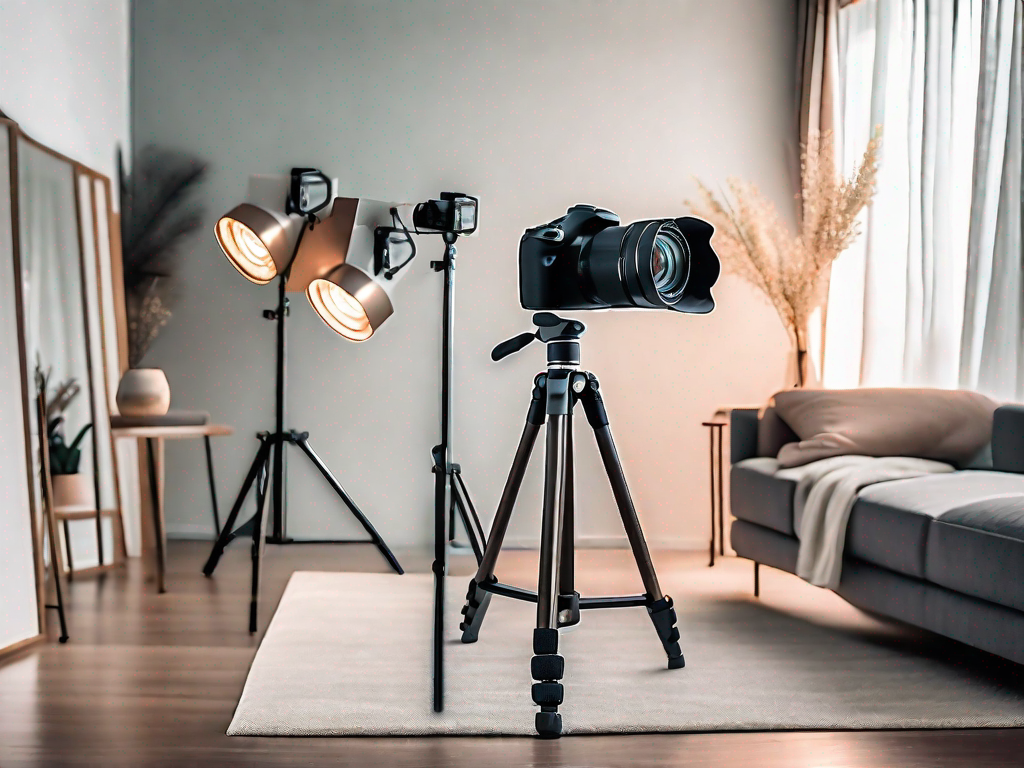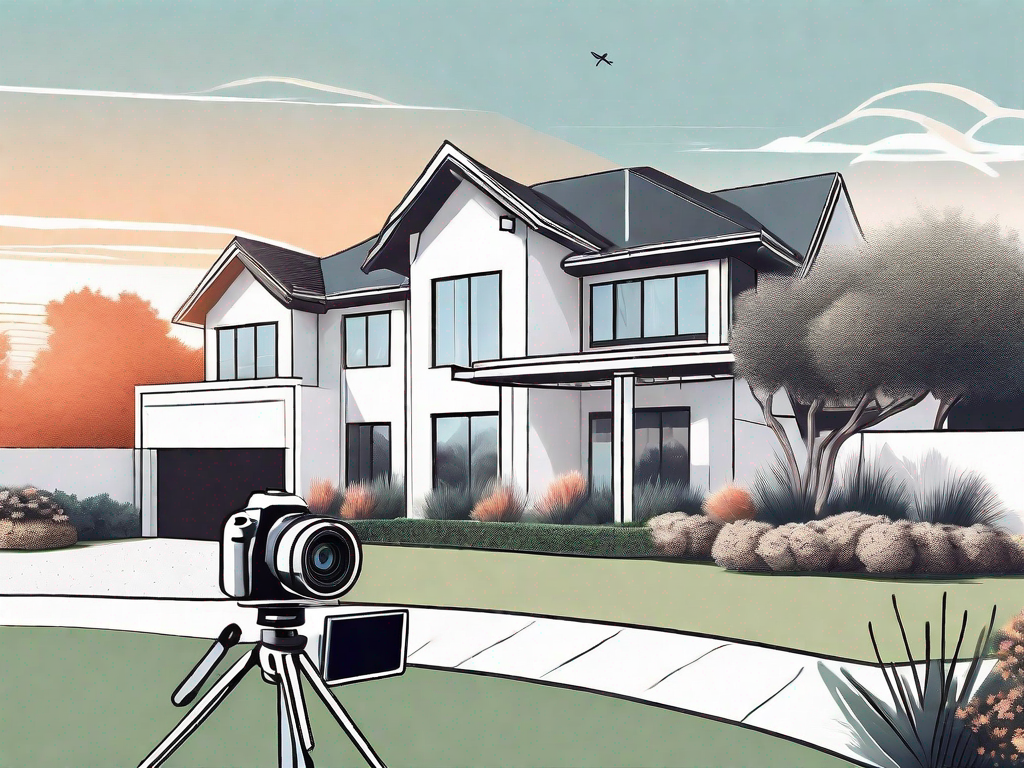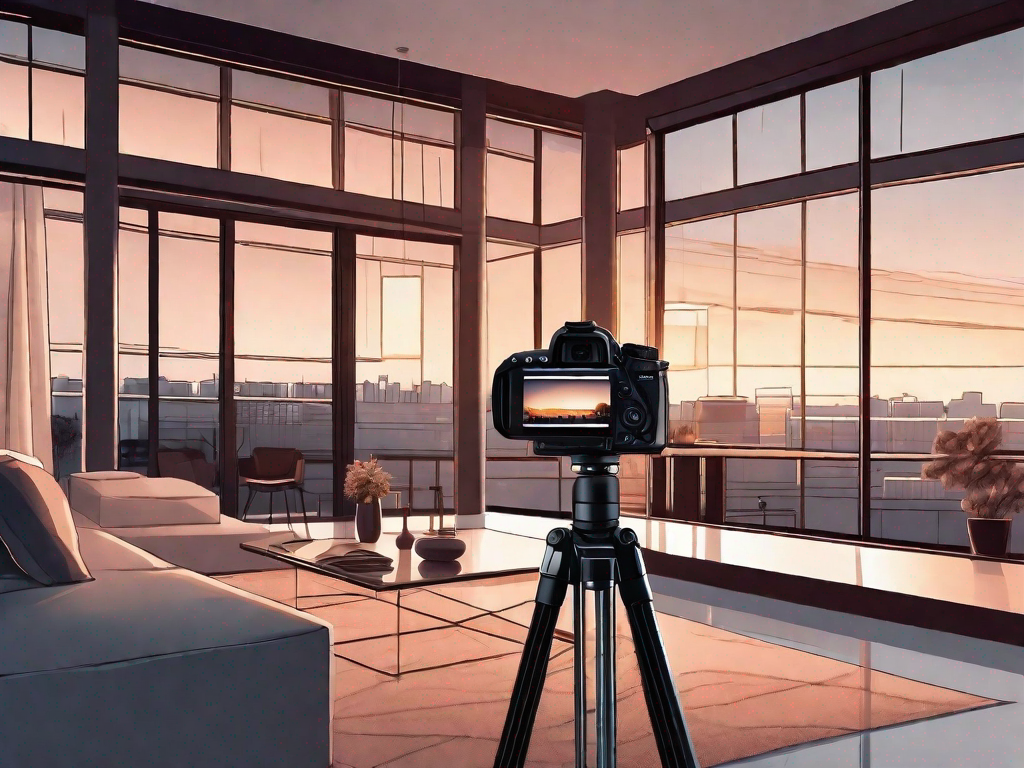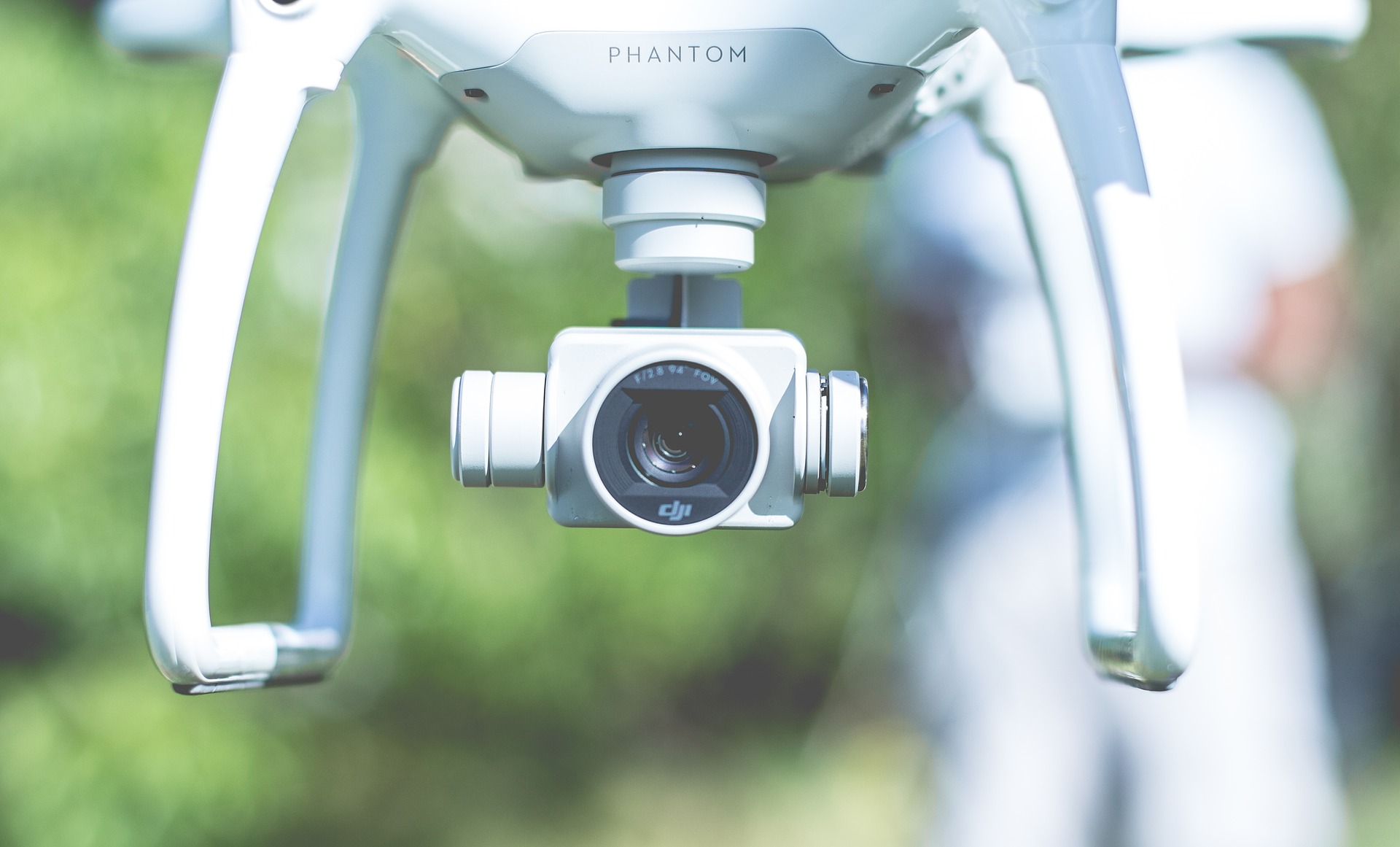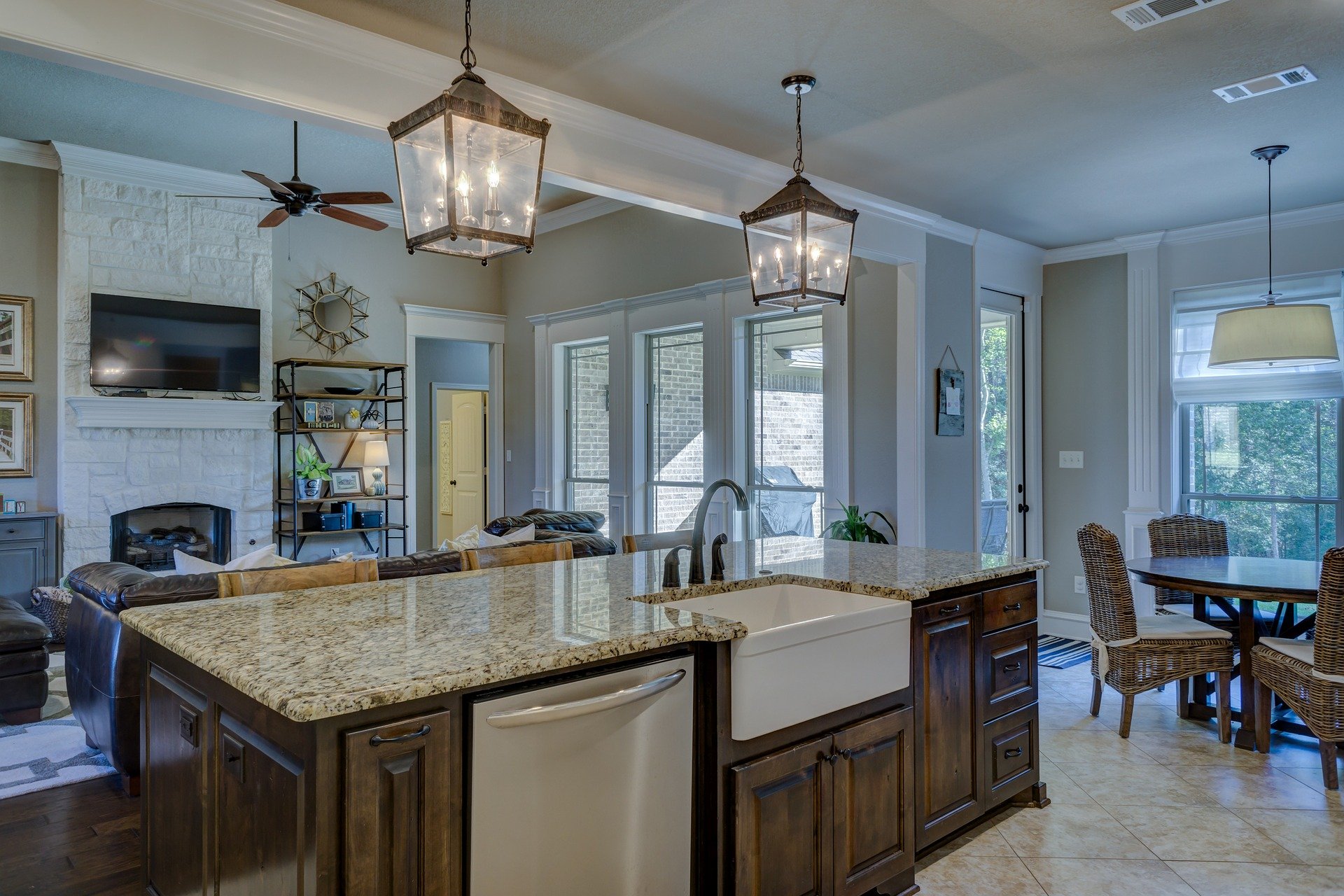In today’s real estate market, the power of visually appealing listing photography cannot be overstated. With potential buyers relying heavily on online platforms to search for their dream homes, high-quality photos can make all the difference in attracting and captivating their attention. In this article, we will explore the importance of listing photography, essential equipment for the job, techniques for capturing stunning property photos, and the post-production process. By mastering the art of listing photography, you can significantly enhance your chances of securing successful property sales.
Understanding the Importance of Listing Photography

The role of photography in real estate goes far beyond merely showcasing properties. It acts as the ultimate first impression, enticing potential buyers to delve deeper into property listings. While the written descriptions and property details are essential, it is the visual impact that truly captivates and piques curiosity. Buyers are more likely to spend time exploring a listing that features high-quality photos compared to those with mediocre visuals or, worse yet, no photos at all.
When it comes to listing photography, every detail matters. From the angle at which a room is captured to the lighting and composition, each element contributes to the overall appeal of a property. Professional photographers understand how to highlight the unique features of a home, whether it’s the intricate crown molding, the stunning views from the balcony, or the inviting warmth of a cozy fireplace.
The Role of Photography in Real Estate
Photography serves as a vital marketing tool in the real estate industry. It allows potential buyers to get a genuine impression of spaces from the comfort of their own homes, saving them time and energy. With the advent of online listings and virtual tours, buyers can now explore multiple properties without leaving their living rooms. This convenience has made photography even more crucial in capturing the attention of prospective buyers.
Professional photographs elevate the perceived value of a property, making it more likely to attract serious inquiries and offers. They ignite the imagination, allowing buyers to envision themselves living within the space. A well-composed photograph can evoke emotions and create a sense of desire, prompting potential buyers to take the next step and schedule a viewing or make an offer.
How Quality Photos Impact Property Sales
Studies have consistently shown that compelling listing photography significantly impacts property sales. In fact, listings with high-quality photos tend to receive higher click-through rates and generate more interest and inquiries. When potential buyers are scrolling through numerous listings, a captivating photograph can make all the difference in catching their attention and prompting them to learn more about a property.
Additionally, properties showcased with professional photos generally sell faster and at higher prices than those with amateur snapshots. The investment in masterful listing photography can be a game-changer, giving your properties a competitive edge in a crowded market. When buyers see stunning images that showcase a property’s best features, they are more likely to perceive it as a valuable investment and be willing to pay a premium price.
Furthermore, quality photography can help establish your brand as a real estate agent or agency. When consistently delivering visually appealing and professional images, you build a reputation for excellence and attention to detail. This reputation can attract more clients and referrals, as satisfied buyers and sellers appreciate the effort put into presenting their properties in the best possible light.
In conclusion, listing photography plays a crucial role in the real estate industry. It goes beyond capturing images; it is about creating an emotional connection with potential buyers and showcasing the true essence and value of a property. By investing in professional photography, you can elevate your listings, attract more interest, and ultimately achieve faster and more profitable property sales.
Essential Equipment for Listing Photography
When it comes to listing photography, having the right equipment is crucial to producing outstanding results. While professional gear certainly has its advantages, it is possible to achieve excellent photos with the right knowledge and a few essential tools.
Listing photography is all about capturing a property in its best light, showcasing its unique features, and enticing potential buyers. To accomplish this, it’s important to invest in the right equipment that will allow you to capture stunning images that truly represent the property.
Choosing the Right Camera
Investing in a good quality digital camera is the cornerstone of successful listing photography. Look for a camera with a high-resolution sensor, as it will allow for sharper and more detailed images. A higher megapixel count will also give you the flexibility to crop and zoom without losing image quality.
Additionally, consider cameras that offer interchangeable lenses to give you greater flexibility and control over your shots. Wide-angle lenses are particularly useful for capturing spacious interiors and showcasing the full potential of a property.
Importance of Lighting Equipment
Lighting plays a crucial role in highlighting a property’s best features and creating an inviting atmosphere. While natural light is often the preferred choice, it is essential to have lighting equipment at your disposal to handle challenging lighting conditions or to enhance certain areas of a property.
Invest in sturdy tripods to keep your camera steady and eliminate any potential camera shake. This is especially important when shooting in low light conditions or using longer exposure times. Adjustable lighting stands will allow you to position your lights at the perfect angle, ensuring optimal illumination of the subject.
External flashes are another valuable tool to have in your arsenal. They provide additional light when needed and can be used to create dramatic lighting effects. With the ability to control the direction and intensity of the light, you can easily highlight specific areas of a room or add depth to your photographs.
Additional Tools for High-Quality Photos
In addition to a quality camera and lighting equipment, there are several other tools that can take your listing photography to the next level. A tripod will not only keep your shots steady but also allow you to experiment with longer exposure times, capturing stunning night shots or creating beautiful light trails.
Don’t forget to invest in spare batteries and memory cards. Running out of power or storage space during a shoot can be frustrating and may cause you to miss important shots. Having extras on hand ensures that you can continue shooting without interruption.
Lens filters are another valuable accessory to consider. They can help enhance colors, reduce glare, and protect your lenses from scratches or dust. Filters such as polarizers can also be used to control reflections and make skies appear more vibrant.
Lastly, it’s always a good idea to have a comfortable camera bag or backpack to carry and protect your equipment. Look for a bag that offers ample storage space, padded compartments, and adjustable straps for added comfort.
By investing in the right equipment and accessories, you’ll be well-equipped to capture stunning listing photos that will attract potential buyers and make your property stand out from the competition.
Techniques for Capturing Stunning Property Photos
Now that you have the necessary equipment, it’s time to explore techniques that will transform your listing photos into stunning visual representations of properties. Skilled composition, proper lighting techniques, and capturing the best angles are key elements in achieving exceptional results.
The Art of Composition in Listing Photography
Composition refers to how elements within an image are arranged and interact with one another. It is essential to pay attention to framing, balance, and leading lines to create visually appealing compositions. Experiment with different angles and heights to showcase the property’s unique features and create a sense of space.
Lighting Techniques for Property Photography
As mentioned earlier, lighting is crucial in capturing impressive property photos. When shooting interiors, avoid using direct, harsh lights that create strong shadows. Instead, utilize diffused light sources or bounce lights off walls and ceilings to create soft and even lighting. For exterior shots, aim for early morning or late afternoon when the natural light is warm and inviting.
Capturing the Best Angles of a Property
Every property has its own distinctive features that deserve to be highlighted. Take the time to explore different angles and perspectives to showcase the property in its best light. Experiment with capturing details, such as unique architectural elements or stunning views, to create visually captivating images that stand out.
Post-Production Process in Listing Photography
Once you have captured a series of exceptional photos, it is time to unleash the power of post-production editing to enhance your images even further. While it’s important to maintain the integrity of the property, subtle adjustments can elevate the overall visual experience for potential buyers.
Introduction to Photo Editing Software
Photo editing software, such as Adobe Lightroom or Photoshop, can take your photos to new heights. These tools allow you to fine-tune exposure, color balance, and sharpness while ensuring that the photos remain authentic representations of the property. Take advantage of these powerful resources to make your listing stand out from the competition.
Enhancing Property Photos through Editing
During the editing process, focus on enhancing the property’s features and ensuring that the images are visually engaging. Adjusting the brightness and contrast, removing distractions, and correcting minor imperfections can make a significant difference in the overall appeal of the photos. However, remember to maintain a genuine representation of the property to avoid misleading potential buyers.
Common Mistakes to Avoid in Photo Editing
While photo editing can be a powerful tool if used correctly, it’s essential to be aware of common mistakes that can undermine the integrity of your photos. Over-processing images, excessive manipulation, or misleading edits can lead to negative consequences and damage your credibility as a real estate professional. Always strive for authenticity and transparency in your listing photos.
In conclusion, mastering the art of listing photography is a skill that can greatly impact your success in the real estate industry. By understanding the importance of photography in attracting potential buyers, investing in essential equipment, honing your photography techniques, and utilizing post-production editing effectively, you can elevate your listings and stand out from the competition. Remember, exceptional listing photography serves as the gateway to capturing the hearts and imaginations of buyers, ultimately leading to successful property sales.
